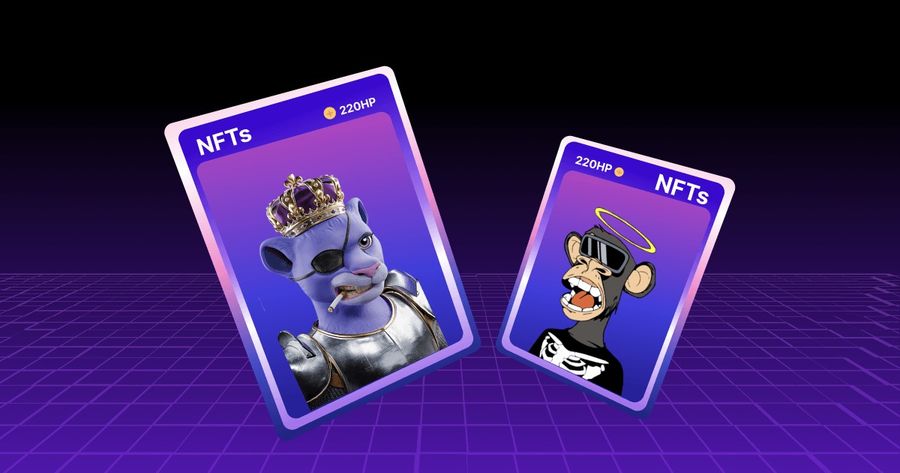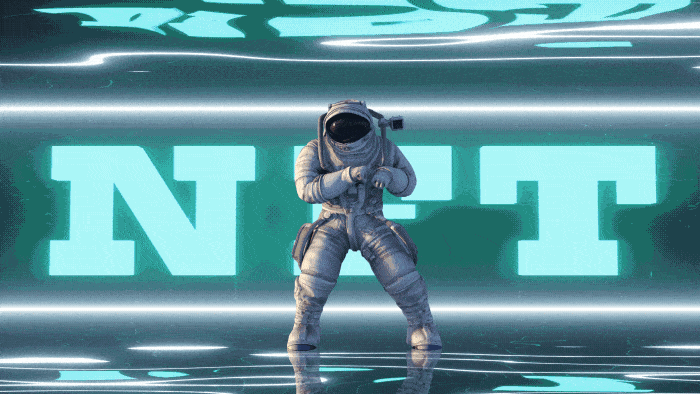Besides turning art, music and the movie industry upside down, the collectible side of NFTs had made art money and a currency for artists and people interested in buying art. As a result, NFT trading cards have become a new buzzword within the blockchain community, enabling users to own and trade digital collectibles in an entirely new way. This article explains the concept, technology and everything you need to know about NFT trading cards.
What are NFT Trading Cards?
NFT trading cards are rectangular digital images owned and traded on blockchain networks. The collectible cards feature themes such as movies, sports or video games and display specific characters, scenes, or athletes combined with relevant information. The main element of trading cards is that they’re collectible, meaning fans can accumulate, trade and play particular games using them.
Related: What Is Hyper NFT?
Every NFT trading card entering the marketplace is unique, with its distinctive identity and proof of authentication making it valuable and desirable. Similar to the traditional physical trading card, NFT trading cards have different forms and designs. Each card’s rarity, demand and significance determine its value.

However, their main difference from traditional collectibles is that NFT trading cards are recorded and verified on a blockchain, making all related transactions secure and transparent. All digital collectibles carry distinct metadata for verification of ownership and authenticity. As a result, people need help to forge or replicate these digital cards due to the characteristics of blockchain technology. Some prominent examples of NFT trading cards are CryptoPunks, CryptoKitties, Axie Infinity, NBA Top Shots, Garbage Pail Kids and Art Blocks.
Step-By-Step Guide to Purchasing NFT Trading Cards on Various Platforms
Buying NFT trading cards as a form of investment is a potentially lucrative activity that can be exciting for collectors. A few steps are involved, even though different marketplaces have slight variations based on your chosen platform.
Nonetheless, the following five steps will give you an idea of what to expect when buying digital collectibles:
Step 1: Choose a Marketplace – There are different NFT trading card marketplaces; the most prominent examples include Rarible, OpenSea, NBA Top Shot, and SuperRare. Since every platform offers a unique selection of trading cards and features, you must carefully research the market and select what fits your needs.
Step 2: Create a Wallet – You must own a cryptocurrency wallet to buy and store NFT cards. Always ensure your digital wallet supports the blockchain your desired marketplace uses. The most popular wallets include Trust Wallet, Coinbase Wallet and MetaMask.
Step 3: Add Crypto to Your Wallet: You need cryptocurrency to buy any NFT. Ethereum is the most popular crypto among NFT enthusiasts.
Step 4: Browse and Select Trading Cards – With funds in your wallet, it’s time to head to the marketplace and look for the NFT trading cards you’re interested in. All NFTs have unique identifiers you need to copy before making a purchase.
Step 5: Complete the transaction by pasting the trading card’s identifier and paying using the cryptocurrency in your wallet. Congratulations! You have bought your first NFT trading card, and it’s already in your trading wallet.
Strategies for Pricing and Marketing NFT Trading Cards Effectively
The value of trading cards depends on market demand, meaning that when a card is famous and attracts many collectors, its value increases because of supply-demand dynamics. The scarcity and desirability of different cards drive up their prices.
An important strategy involves high-profile or rare NFT trading cards for a chance to profiteer as they increase in value. After that, you can sit and watch for opportunities to sell your cards on the secondary market.

There are different ways you can showcase your NFT trading cards. For example, the popular marketplace NBA Top Shot has a prominent digital gallery where they display cards to connect collectors and attract potential buyers. Among the most effective methods for marketing NFT trading cards include:
- Use social media platforms like Discord and X (formerly Twitter) to foster a sense of community and display cards.
- Create a personal website where you can control its customization, presentation or any other way of connecting directly with potential buyers.
- Advertise on physical galleries that showcase collections for a chance to engage with a broader audience and create an immersive experience.
- Select a marketplace with an active community and a robust user base to attract potential buyers and enhance visibility. Ensure the platform’s features and user interface have what you need to advertise your collection effectively.

NFT Marketplaces Reviews from HODL FM:
- OpenSea Review 2023 – Full Overview of OpenSea NFT Marketplace
- Rarible Review – Full Overview of Rarible NFT Marketplace
- The First Physical NFT Store Opens in the Mall of Dubai
Consider your goals and preferences when choosing the best method to showcase your digital collectibles, whether you want to maximize your reach or control your presentation.
Trends and Developments Shaping the Future of NFT Trading Cards
NFT trading cards are a new form of investment that is still unfolding. Like all new stuff, predicting the future with certainty can be challenging. However, it’s possible to predict several potential trends that are shaping their future:
Increased Adoption: NFT trading cards are gaining popularity and adoption as more people understand the concept and technology. The trend will likely continue as more brands, creators and artists explore their potential.
Incorporation with Gaming: We will likely see continued integration between gaming platforms and NFT trading cards. Cards are likely to have utility within games, in-game, grant special features, and unique experiences, all likely to enhance interactivity and value.
Virtual Reality and Augmented Reality: As technologies like virtual reality (VR) and augmented reality (AR) advance, their immersive experience is likely to traverse toward NFT trading cards. This will enable users to view, interact with and display their digital collectibles in virtual spaces.
Enhanced Collectible Features: NFT cards of the future will likely incorporate improved collectible and interactive features. This could include elements like dynamic artwork and animations, adding depth to the experience and increasing appeal.
Fractional Ownership and Trading: In the future, multiple individuals could own a portion of an NFT card and possibly widen accessibility to high-value cards. New platforms facilitating fractional ownership of NFT trading cards could make them more accessible.
Regulatory Considerations: As cryptocurrency becomes more popular and mainstream, regulatory bodies could soon introduce regulations and guidelines to deal with issues like copyright infringement, ownership and consumer protection.
Potential Opportunities and Challenges for the Market Recap
NFT trading cards offer exciting opportunities and potential for change as the world shifts towards digital platforms and businesses look for ways to stay ahead of their rivals. NFTs have created new ways for businesses to interact with their customers. Companies can create customized digital trading cards representing events, achievements, products or players to engage with their consumers. Nonetheless, creators still have to contend with high gas fees, especially when mass-producing NFT cards.
Read More:
- Power-Up Protectors and South Korea’s NFT and CBDC Deposit
- Setting Sail for Antarctica: Exploring the World of Pudgy Penguins NFTs
- The Top 10 Funniest NFT Memes in 2023
NFT cards have created a one-of-a-kind digital asset that you can sell for a profit while proffering real value to recipients and increasing loyalty. Brands can use them to increase visibility and build a community around their products or services with a sense of exclusivity among the customers. Whether you want to retain customers or reward or incentivize them, the potential for NFT trading cards offers far-reaching implications regarding how to interact with customers in the future.
Disclaimer: All materials on this site are for informational purposes only. None of the material should be interpreted as investment advice. Please note that despite the nature of much of the material created and hosted on this website, HODL FM is not a financial reference resource and the opinions of authors and other contributors are their own and should not be taken as financial advice. If you require advice of this sort, HODL FM strongly recommends contacting a qualified industry professional.





